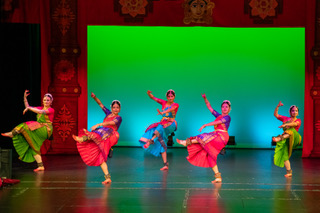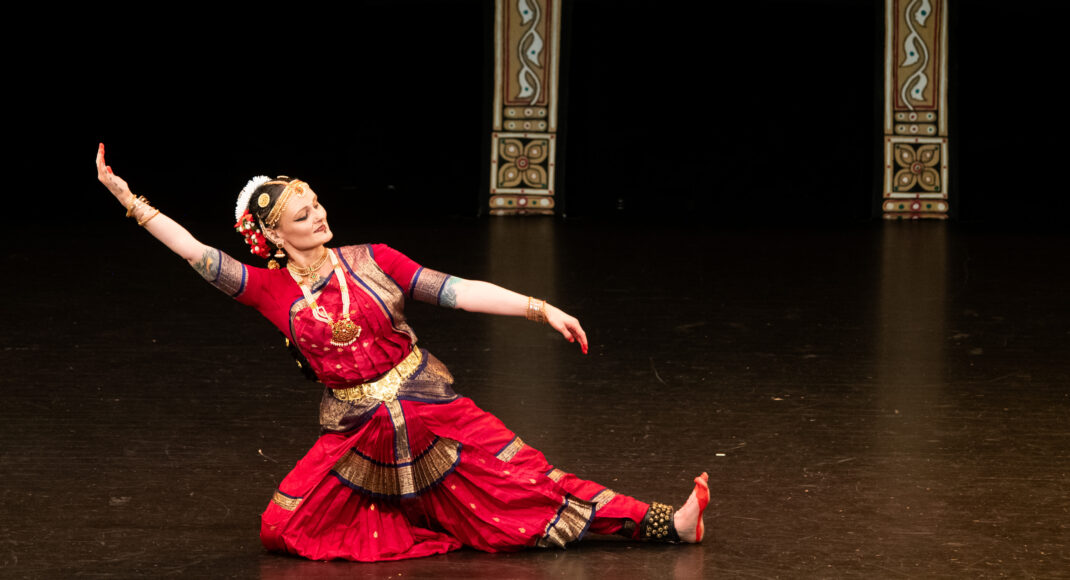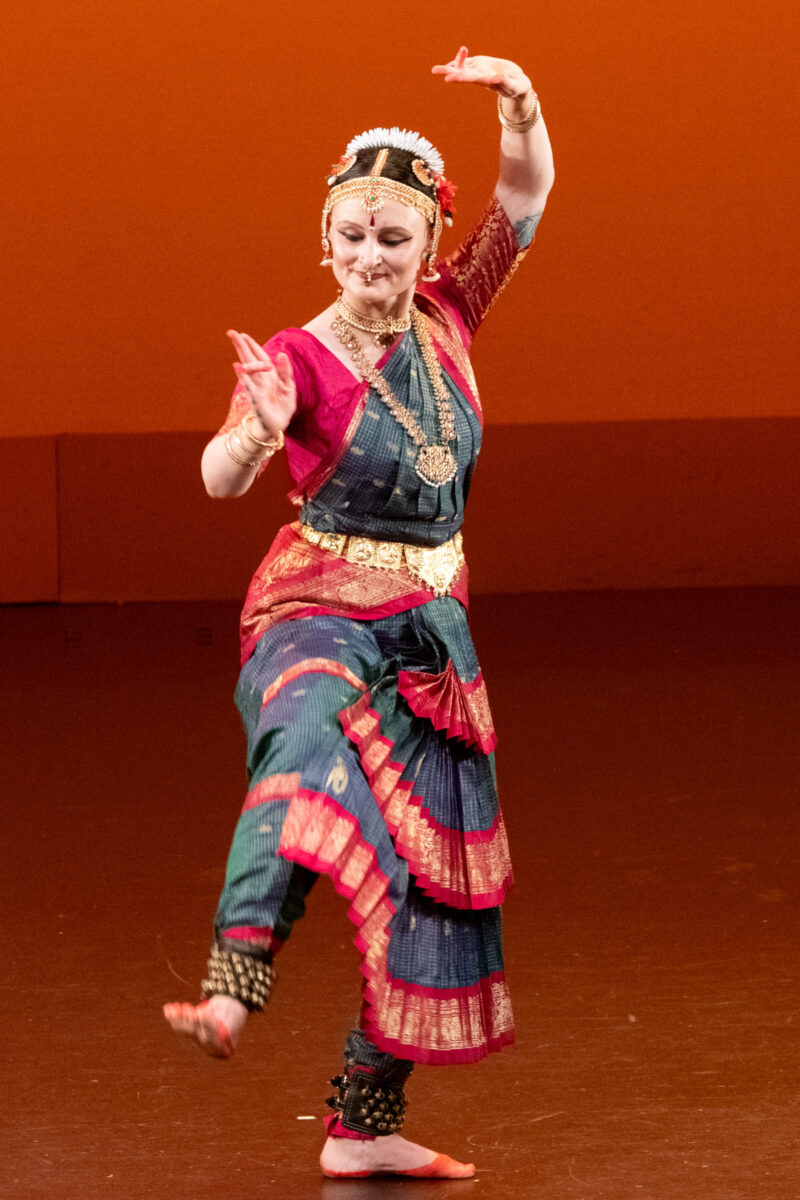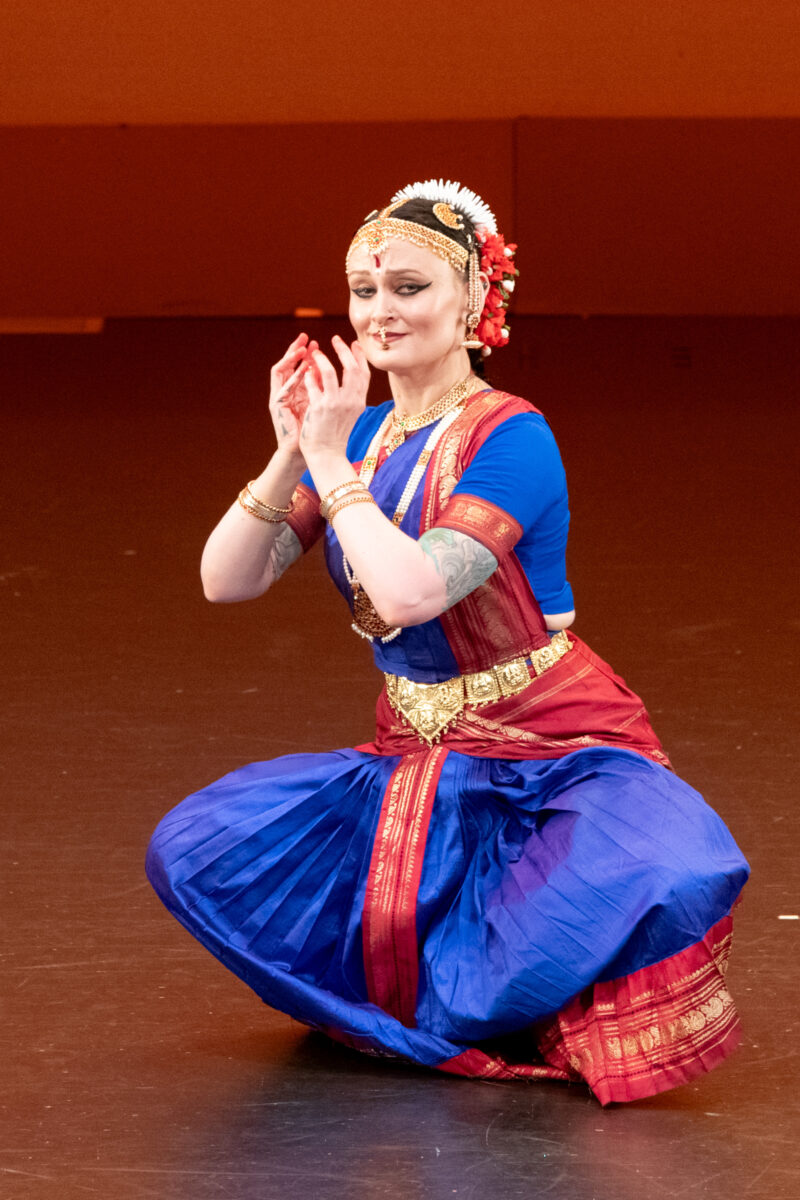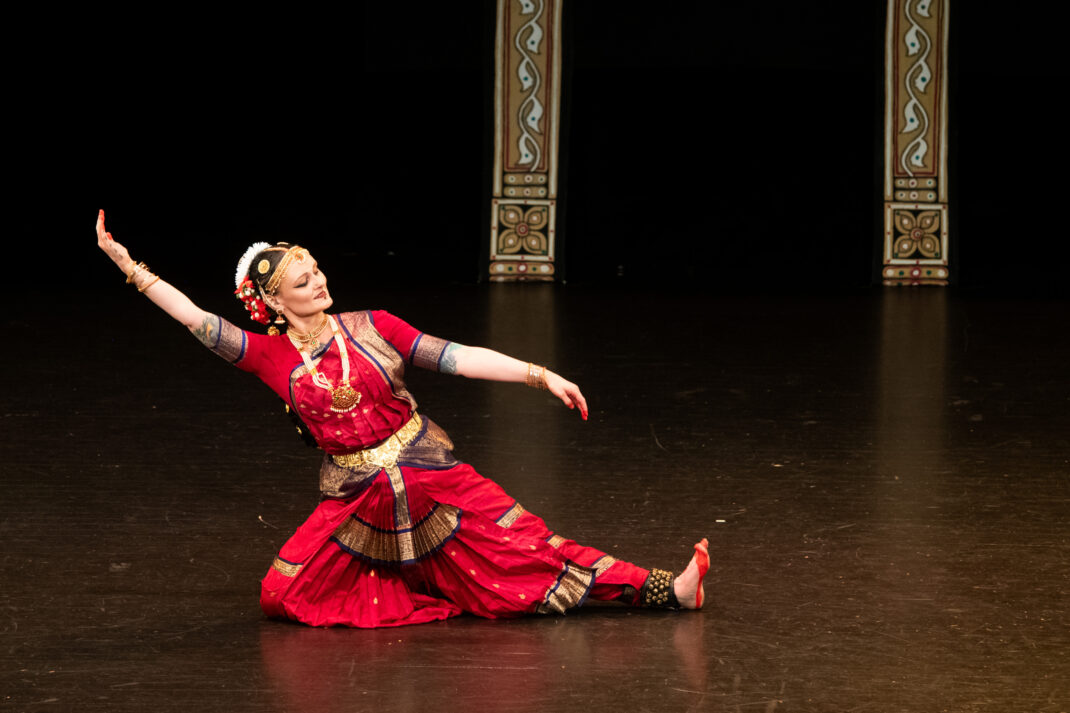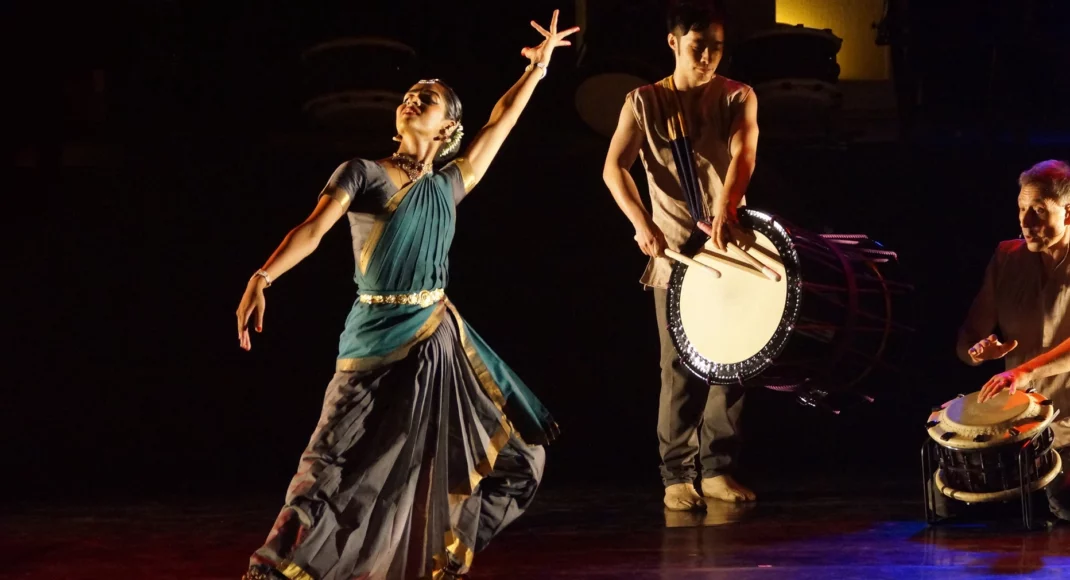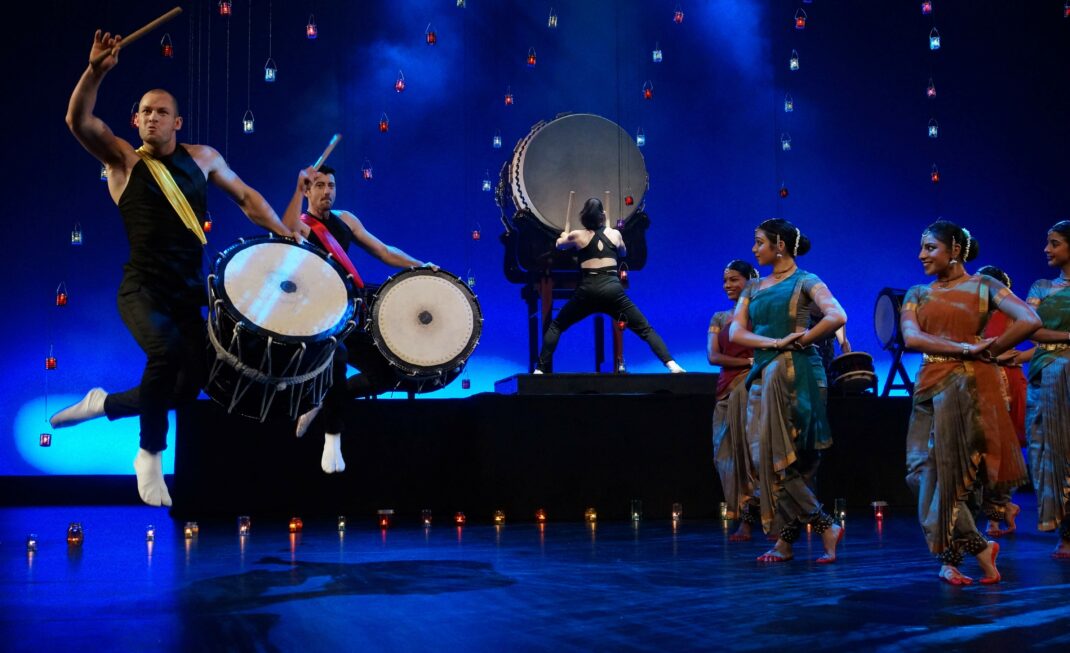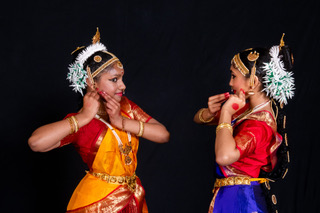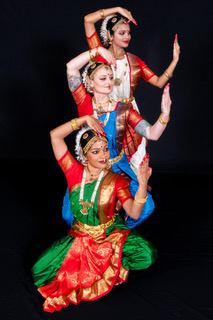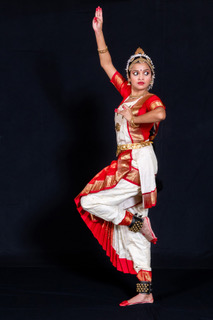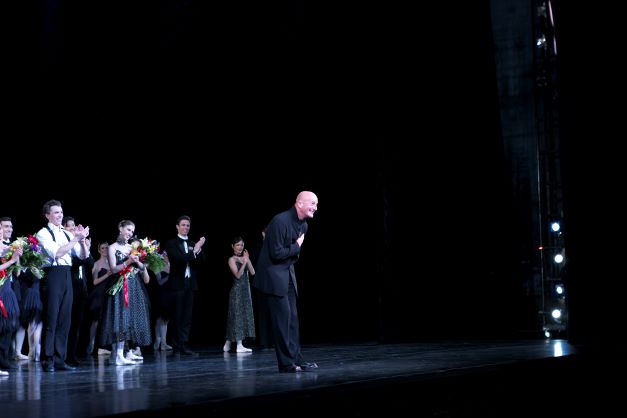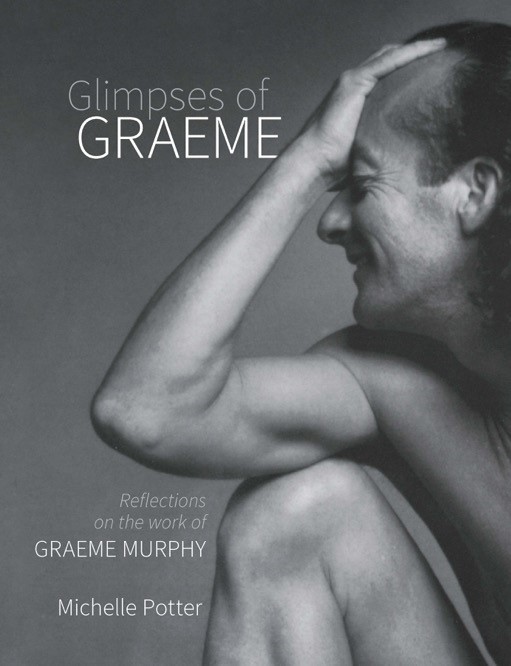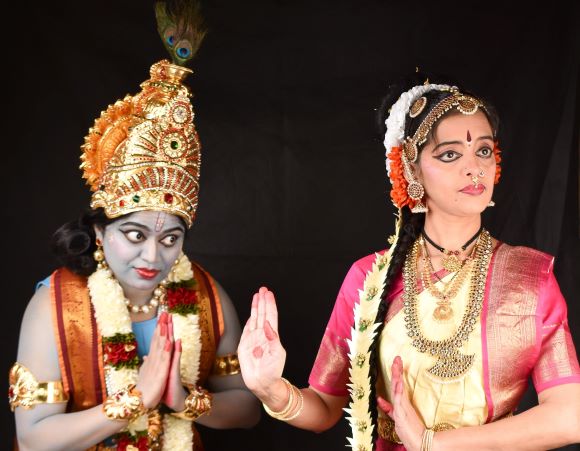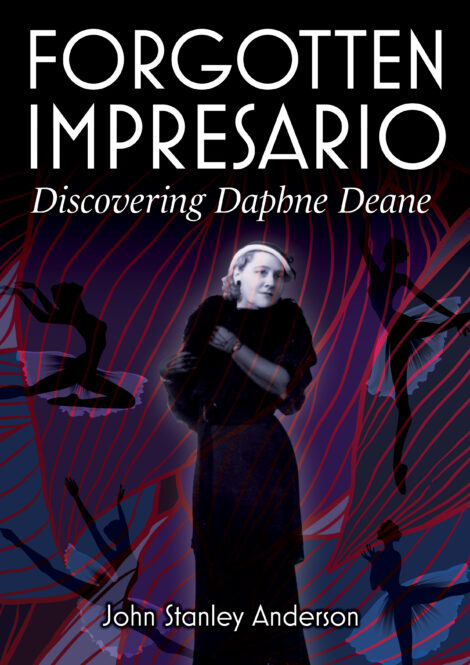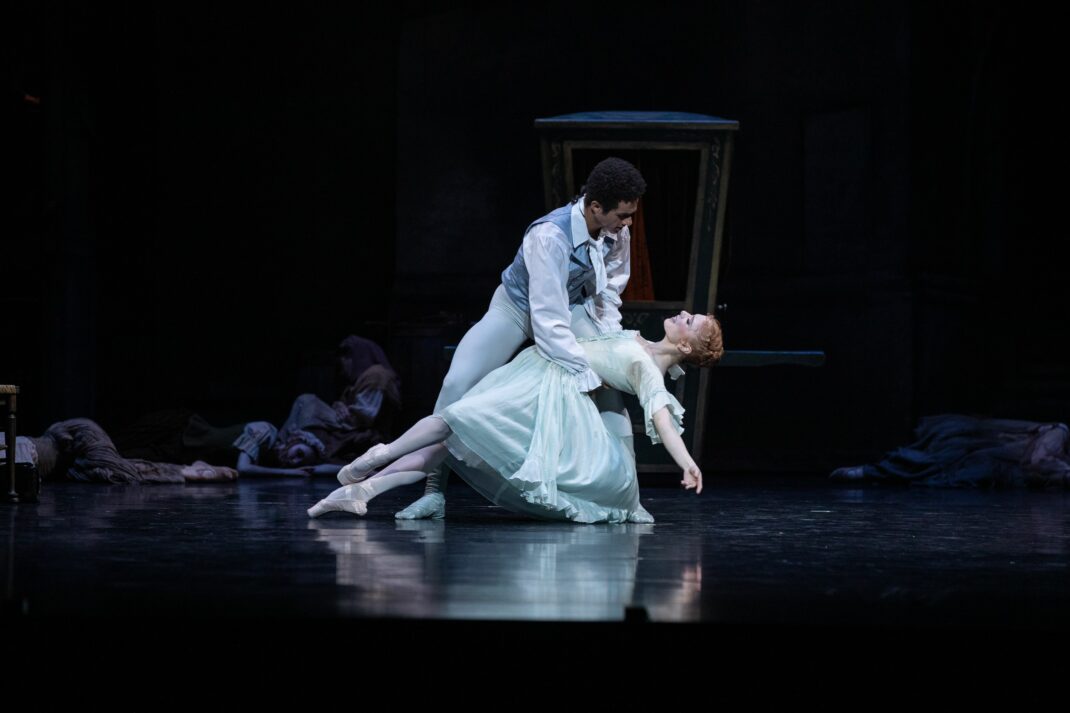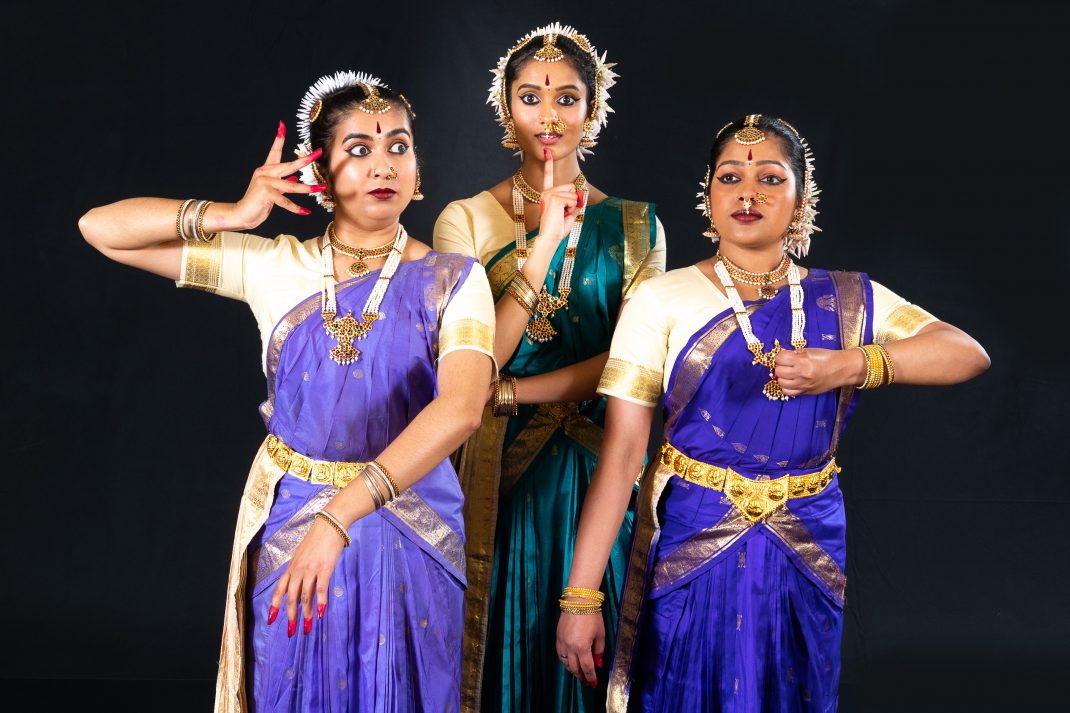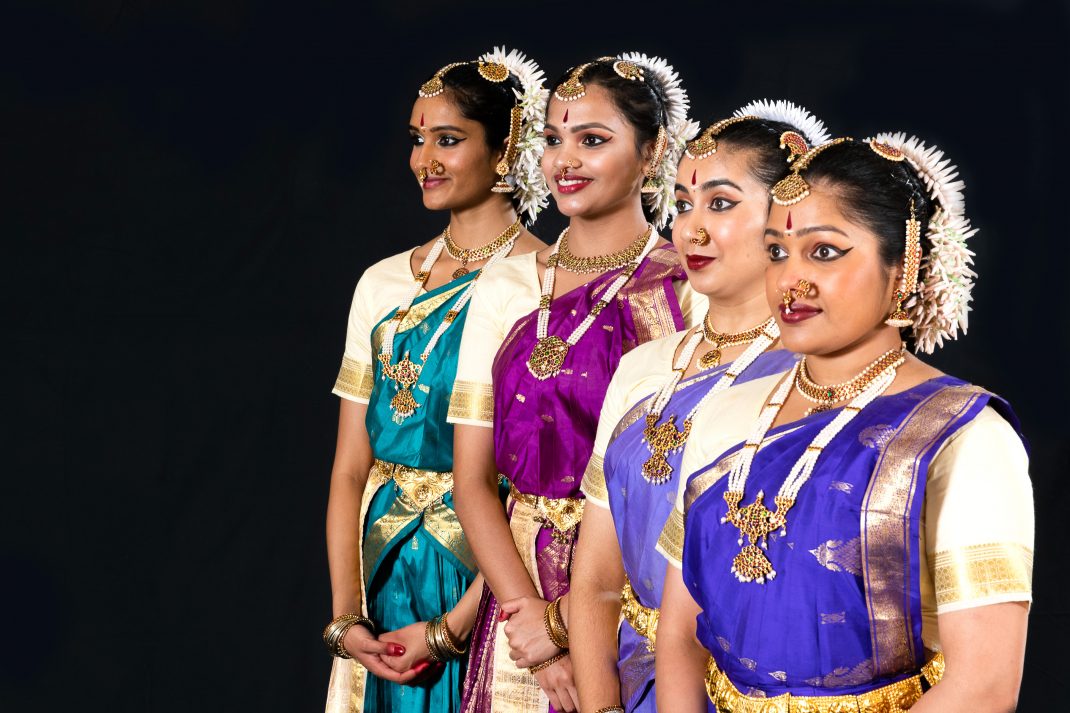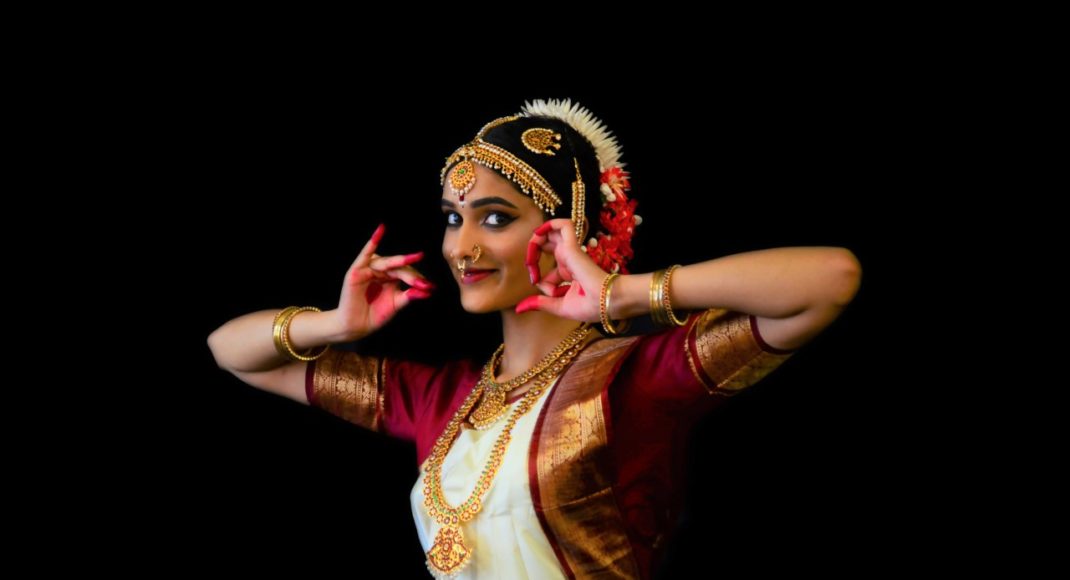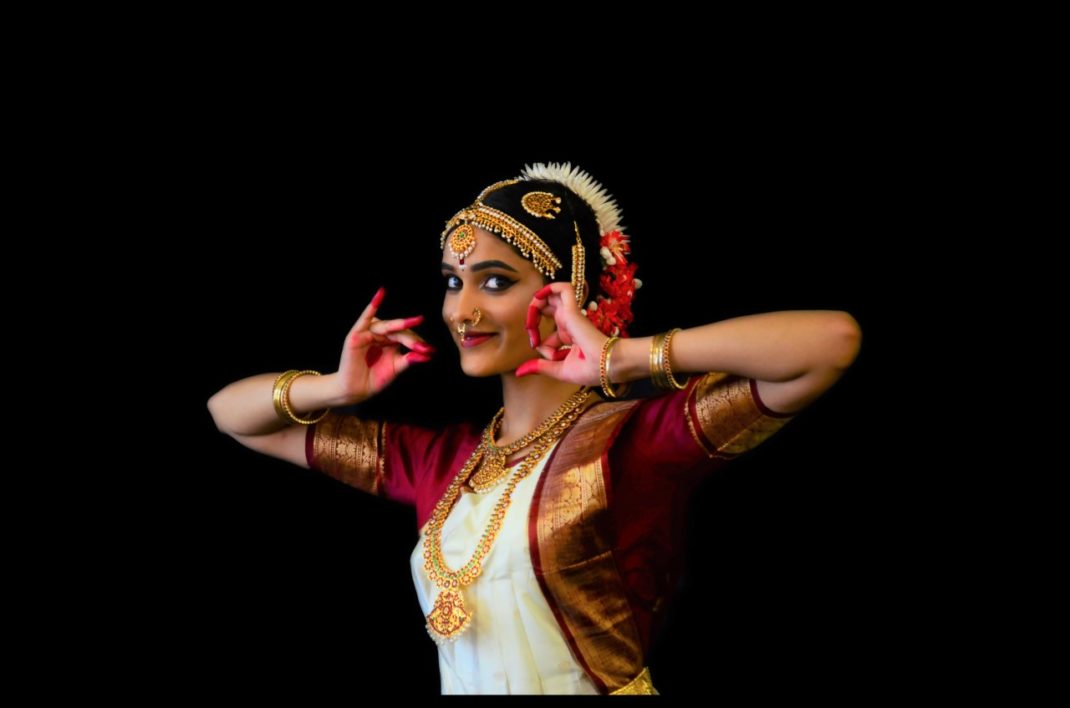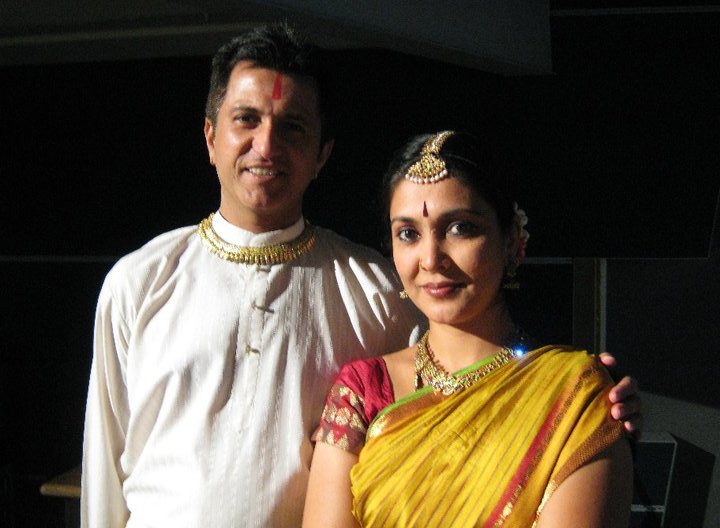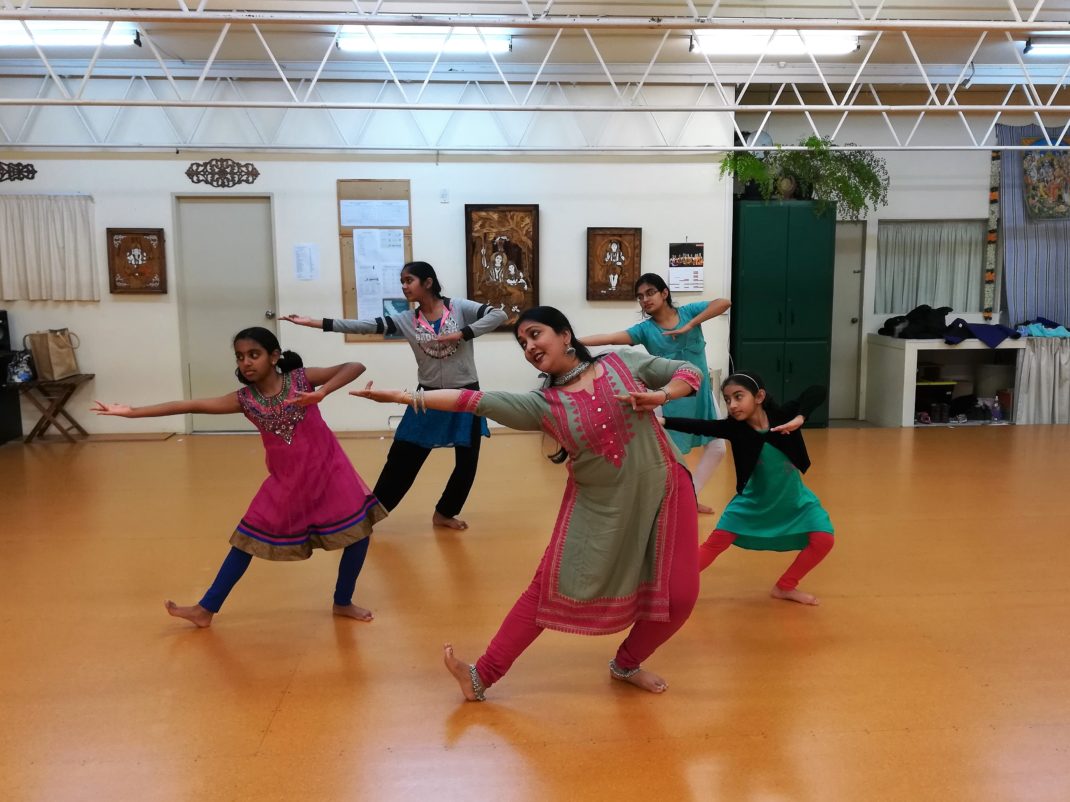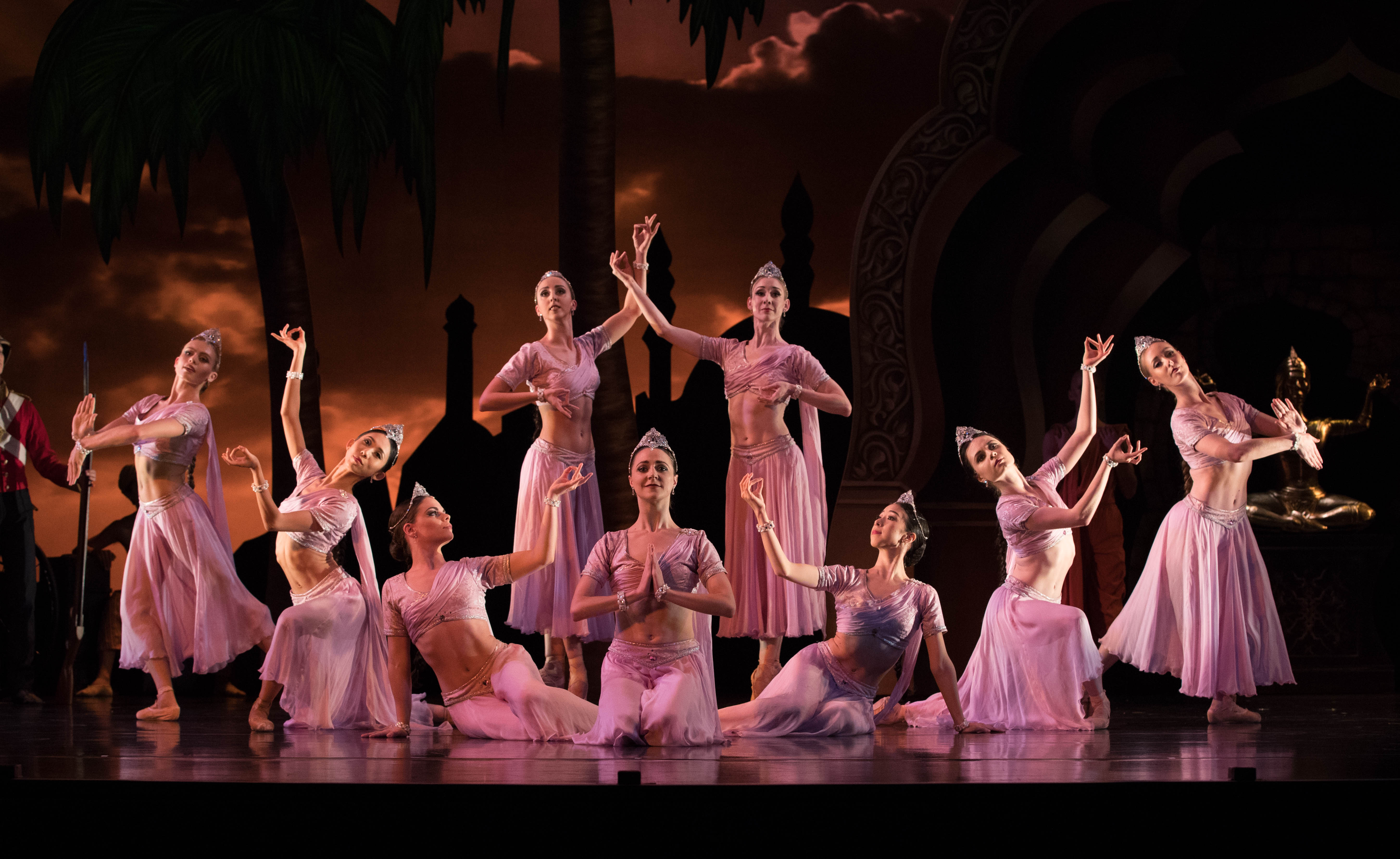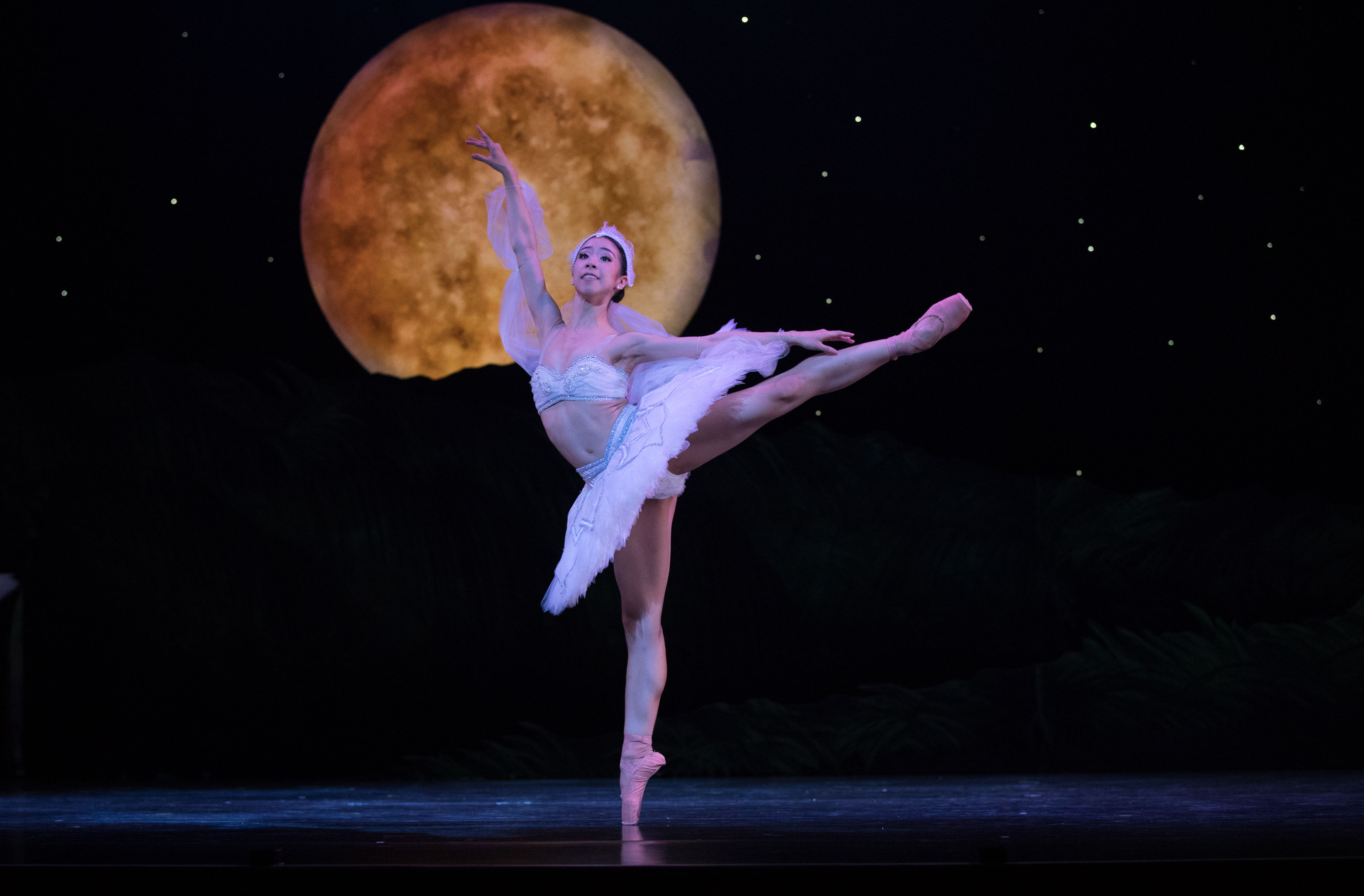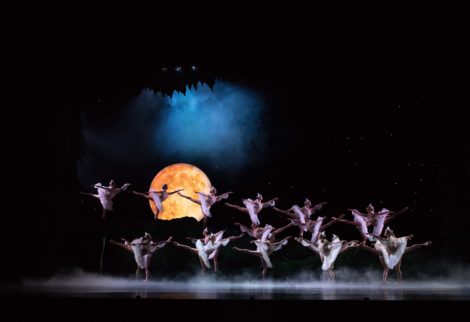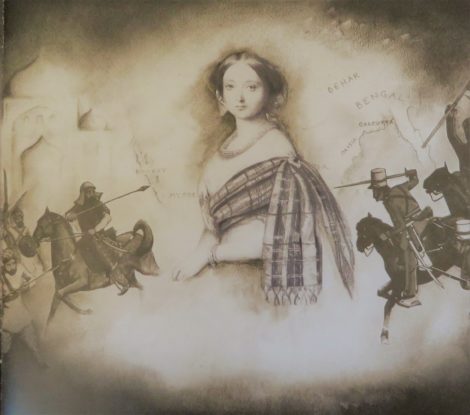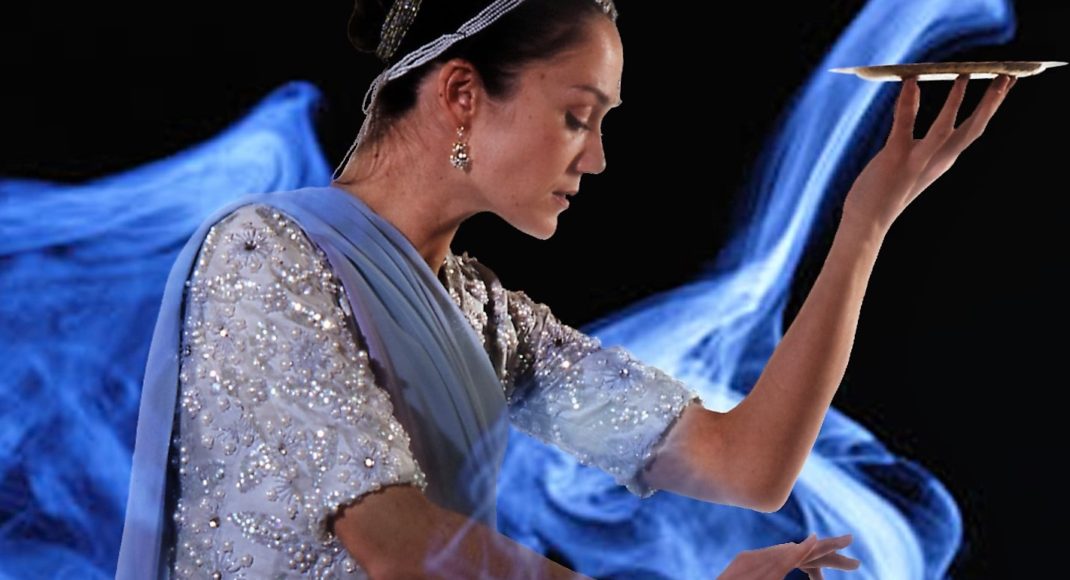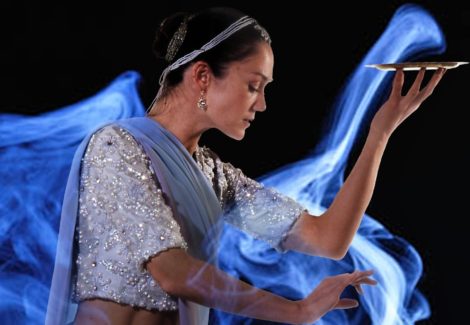choreography Vivek Kinra
auspices of Chamber Music New Zealand
29 June 2024. Q Theatre, Auckland
30 June 2024. Meteor Theatre, Hamilton
2 July 2024. Little Theatre, Lower Hutt
reviewed by Jennifer Shennan
Vismaya is Sanskrit for Amazement and proved the perfect title for this highly enterprising project of Bharata Natyam, South Indian classical dance, in performances and workshops on a national tour to five centres—Auckland, Hamilton, Wellington, Nelson, Christchurch.
In an inspired move, Chamber Music New Zealand (CMNZ) invited four highly skilled Indian musicians to visit and team up with six dancers from the Wellington-based Mudra Dance Company. Vivek Kinra has directed his Bharata Natyam academy and company here since 1990, but the calibre of his work has always been international rather than merely local, so we expect to be thrilled, and we are, by this performance of enriched chamber music.
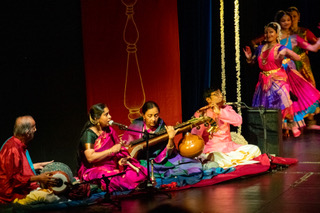
Vocalist and director of music, Ranjani Ganesan Ramesh, sings with full expressive effect, reining in the ensemble with layers of melody and arcs of harmony. Sri Adyar Gopinath is a consummate player of mridangam/drum, his hands declaiming authority then fluttering and diving like hummingbirds, in mesmerising rhythmic embellishments on the steady beat within the music. Both these artists have had long association with the renowned Kalakshetra school in Chennai where Vivek had trained for many years, so they each know the other’s art as their own, and the dancers are galvanised into brilliance as a result.
Tiruchy L. Saravanan plays flute with great skill, evoking songbirds on the wing, and his solo piece, Nagumomu, is a particular delight of flight. The deeper string tones of the veena, beautifully played by Jaishri Suresh, offer a balm and solace that seems to embrace the listener. This ensemble could have played until dawn and no-one from the audience would have left early.
As for the dancers, we saw something quite sublime. I have attended Mudra performances since 1990, including a number of arangetram, (the two-hour solo graduation recital of a pupil who has attained the required standard). Each of those seasons has carried its own high quality but never before have we witnessed such an explosion of joy and total commitment from the six dancers in this production.
All the choreography by Kinra is new, in a wonderful blend that honours tradition but weaves in many contemporary references. He stands on stage before each work to perform the gestures and motifs of the work we are about to see. These are luminous miniatures and reveal the exquisite qualities he has always brought to his stage presence. The opening Pushpanjali, offering of flowers, is followed by Shyamala Dandakam in which a mysterious Tantric goddess is portrayed, and complete rapport is established between musicians and dancers.
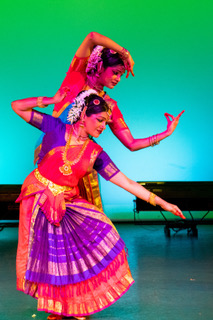
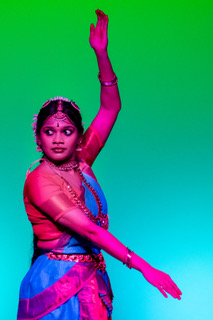
(left) Shrinidhi Bharadwaj and Banu Siva, (right) Shrinidhi Bharadwaj—in the varnam, Navarasa: Nine Emotions. Photos: © Gerry Keating
The major work, a varnam—Navarasa: Nine Emotions—is a tour-de-force. Each dancer has an assured technique with stunning geometric precision in arm and leg movements, intricately detailed mudra (hand gestures), beguiling facial expressions, powerful dramatic timing in sustained narratives, and the range of emotions from love and ecstasy, hope and curiosity, pride and envy, fear and loathing, to peace and serenity. Comedy is also there—for example when Siva disguises himself as an old man and makes approaches to the young devotee to test her love and loyalty. Her disgust is palpable and she passes the test.

There are solo passages, and other times where two dancers move at great speed but in perfect unison (harder to do than it sounds, but no effort is shown). Shrinidhi Bharadwaj, Banu Siva and Varshini Suresh are hugely effective in portraying the emotions of the drama.
There is a distinctive quality to the dancers’ elevation as they anticipate on the upbeat, a leap that flies them free of gravity, to then land, of course, precisely on the beat. The effect on us is kinaesthetic—we feel we have been flying too.
In the final Thillana there is much to celebrate—glorious arcs of dancers curving and intersecting in lines across the stage, in a particularly joyous denouement of a performance that nobody wanted to end. The dancers—Varshini Suresh, Banu Siva, Shrinidhi Bharadwaj, Esther McCreadie, Deepika Sundar and Rhea Homroy—will be long remembered.
Each of the performances I attended, in Auckland, Hamilton and Wellington, had appreciative audiences, but the Lower Hutt’s Little Theatre experience was a particular triumph with the audience on their feet acknowledging the performance of a lifetime.
There were workshops, open to all, offered the day before a performance, and these too were memorable and informative—for example: ‘What skin is the mridangam drumhead made of?’—’Oh, I had to replace the leather with a quality plastic for this tour because New Zealand biosecurity measures are very strict and we could not afford to have this drum impounded for a three-week fumigation. We’d have been back in India by the time it was released.’ Each musician spoke to their instrument but had to be paused after 15 minutes by Kinra, who knows that the sacred and Sanskrit history of this art has to be contained somehow, or we would all have missed the following night’s performance. It’s a considerable art in itself to compress so much into the time available, but we catch all of it. We go home through a wild Wellington storm that had hours earlier almost prevented our planes from the north from landing, but the elements, let’s call them the gods, were with us all the way.
The idea for this project was initially proposed by Rose Campbell, a former trustee of CMNZ, and has proved an exceptional achievement for everyone concerned. There have been some voices raised in complaint that CMNZ is departing from its original charter in including dance and ethnic arts in its programming. I’d have thought everything is ethnic therefore nothing is ethnic … that dance is not the opposite of music but that each art can mutually enhance and inspire the other, so entwined as to be one and the same art. Vismaya was chamber music of the highest calibre, expressed through dancing of mesmerising yet accessible quality.
Heartfelt thanks are due to those whose vision brought us this truly amazing production, to all the performers, and to Vivek Kinra who at the end of the performance thanks us all for coming. That’s the only thing he got wrong all evening. It’s we who are to thank him.
Jennifer Shennan, 4 July 2024
Featured image: Members of Mudra Dance Company (from left) Esther McCreadie, Banu Siva, Shrinidhi Bharadwaj, Varshini Suresh, Deepika Sundar. Photo: © Gerry Keating
